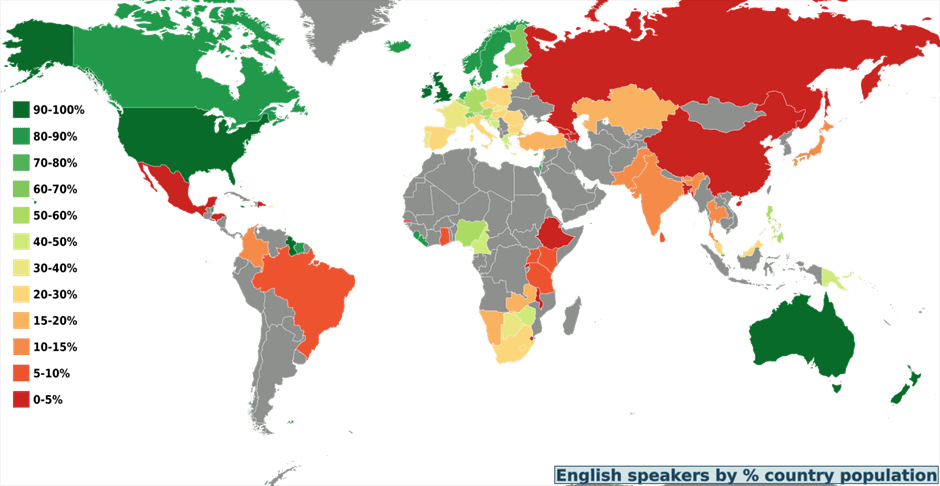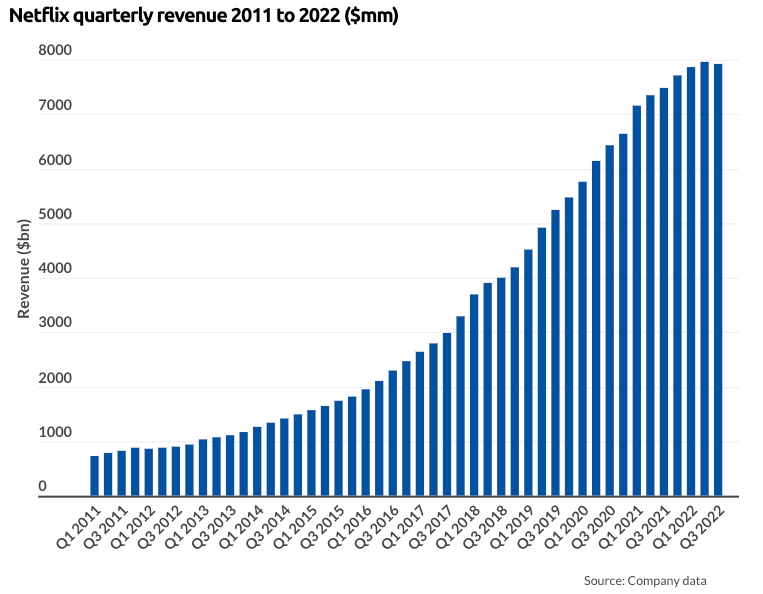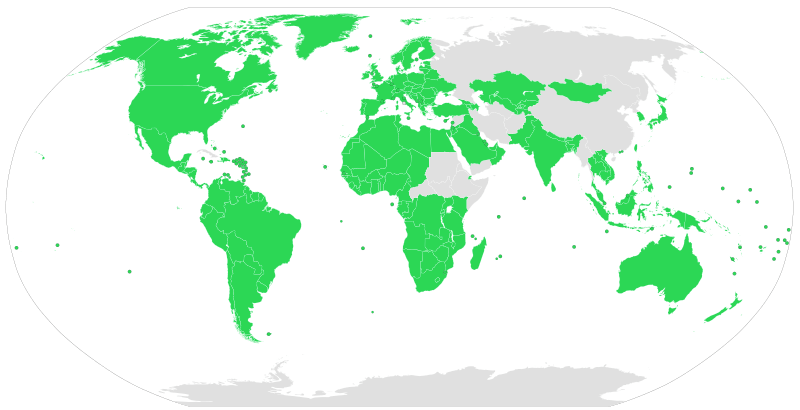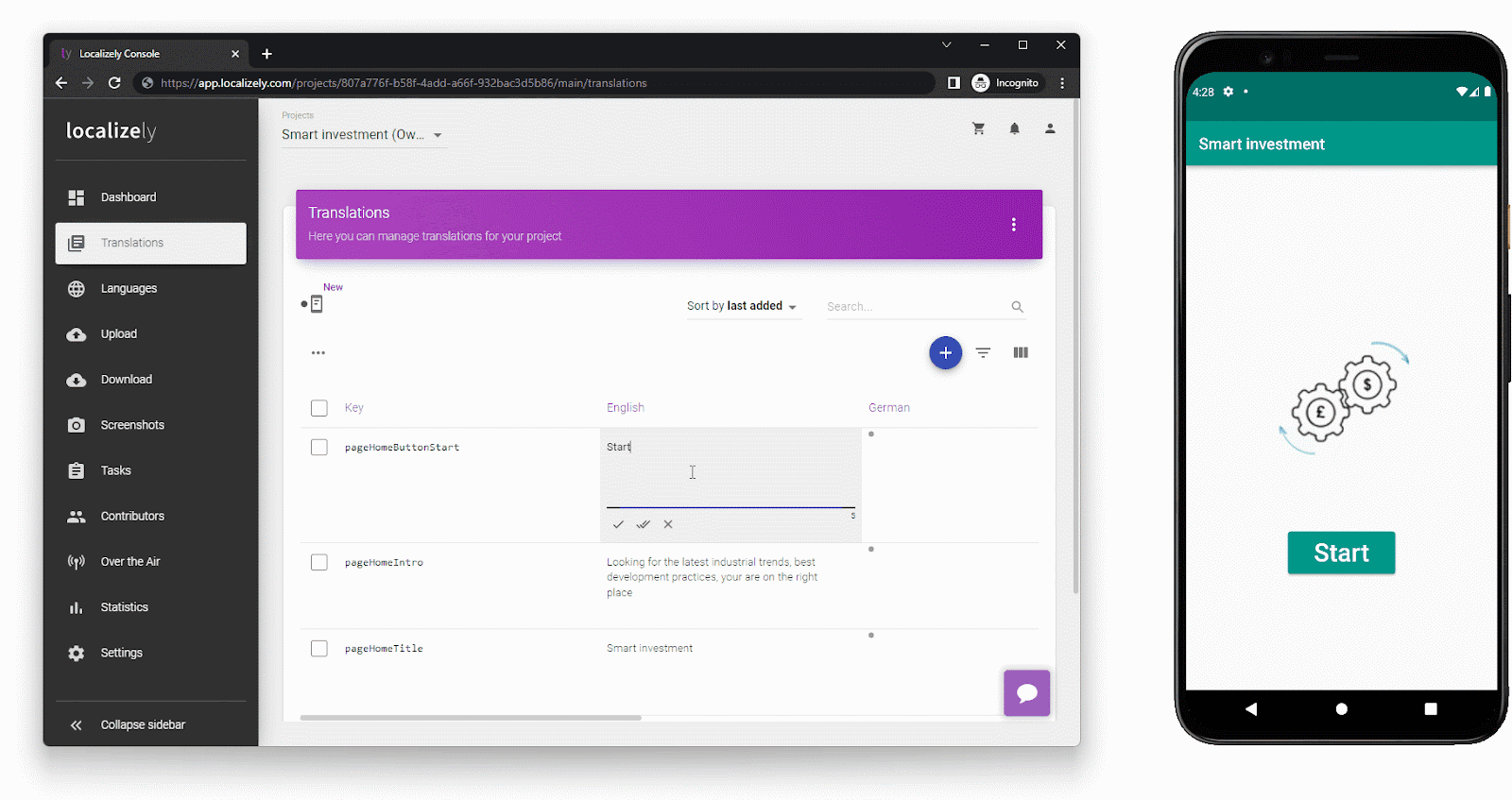How Localization Will Put You in Front of Your Competitors
From Experts
Rare are the people who start a business with a thought - let me just survive in the local market for the rest of my life.
Most people enter entrepreneurship with a vision of game-changing business ideas that’ll seduce the whole world. Globalization made that idea possible, and we witnessed how many brands conquered most continents.
However, the brand's globalization paradox is that you need to localize your product for a triumphant entrance into a foreign market.
A good localization strategy will help you position better in the market than your competitors, no matter how local or global they act.
What Is Localization
Localization is a process of adapting every part of the product and marketing influencing user experience.
If you’re a SaaS business, this means the adaptation of
- User interface
- Marketing materials (website, blog, social media…)
- Customer service
- Sales
This localization process takes into consideration linguistics, cultural and market context. This means that translation won’t be word for word, but adjusted to local language usage and slang typical for your target group. The whole user experience should follow the path and be modified based on the consumeristic habits of the target market.
Why Is Localization Important
While 743 million people speak English as a second language, let’s not forget that there are more than 8 billion people on the planet. And not everyone is into learning English.

According to a CSA research study done in 29 countries in Europe, Asia, North, and South America, in 2020, 76% of consumers preferred to purchase from websites with information in their mother tongue. Not to mention that 40% will not even consider buying anything from websites in other languages.
You may be surprised by these numbers, but the truth is that people feel seen and validated when you talk to them in their mother tongue. They can connect better to your messaging. This happens because we think more cold-heartedly in a foreign language than in our mother tongue.

Furthermore, when you adapt your marketing campaigns, you refer to the local phrases and take local ambassadors for your brand. That’ll resonate more with the targeted market because of their mental and emotional connections with public figures they already know.
All of this means better ROI, secured penetration into the market, and more likely a long-term advancement compared to your competitors who didn’t locate their product or marketing.
Take Netflix as an extraordinary example. They have pretty decent growth and were already positioning better in comparison to their competitors when they pushed digital streaming services. Localization gained victory over their local USA competitors and local competitors in every market they entered.

They localized the interface and content with a combination of the regular global content. This means a consumer in Peru can consume content and see nationally famous actors, movies, and series, as well as French, Korean or American ones. And vice versa.
So localization can beat two types of your competitors at once - the ones coming from the same place as you and those at the local market you want to enter.
Read more → Effective local seo strategy
How to Do Localization Effectively
Even if it seems easy, localization is a complex process requiring good strategy, planning, and management.
To simplify this process, make sure to follow these steps:
1. Set the timeframe and clear deadlines for every part of the process
2. Map out all the processes, hires, and hours needed for localization and predict the costs.
3. Set KPIs and ROIs for the localization that have sense for your brand and target market.
Have a strategy
You'll need a structured strategy for every business, no matter the business model, product type, or market orientation (B2B or B2C, or D2C…). It’s a no-brainer.
During the strategy curation, you’ll need to consider your operations, product, and marketing strategies and implement them together. Make sure to be led by the current happenings in the market you want to enter, rather than the one you’re coming from.
Here we can consider Spotify as an excellent example, as they have the biggest share of music streaming services in the global market.

Spotify’s senior designer, Katie Koch, shared a few years ago how they had to change the localization strategy of a Dual Premium offer in Indonesia because they were starting from their headquarters point of view - where bank accounts and cards were normalized.
On the other hand, those are not so common in Indonesia, and cash is still king.
They, of course, started a partnership with local money transfer providers to enable a premium package for cash payment, but the whole user experience wasn’t aligned with the brand's mission and vision.
It wasn’t after the team traveled to Indonesia to experience their product as locals that they realized which adaptations were actually needed and what would work on both sides - seamless user experience aligned with the brand tone, voice and mission, and vision.
Hire right people
Not everyone can afford to send the whole department to another part of the world to experience life there for a few weeks. Luckily, you don’t need to do that. You just need to hire people that have
- Highly skilled industry knowledge,
- Know targeted market
- Bilingual knowledge of both sourced and targeted languages and cultures
When it comes to the localization department unites the following roles:
- A localization engineer
- A localization specialist
- Professional language services/translators
- A localization project manager
- A designer
Depending on your company's size, you can operate with an engineer, specialist, designer, and a manager in-house and hire translators per project. Or you can have teams of specialists, engineers, designers, and translators in the localization department.
Use the right tools
One of the reasons localizations may end up being unsuccessful is that the team hasn’t been communicating properly. It usually means they don’t have insights into each other's work, which makes their role difficult.
For example, if translators don’t see the context of the words they’re translating, they may keep making mistakes they otherwise wouldn't make.
For example, in Serbian, ‘kosa’ can mean many different things.
коса - hair
коса - slash
коса- mowing blade

Keep in mind that every language has these words that change their meaning depending on the context.
Imagine now how confusing it must be to translate the word ‘kosa’ from Serbian to English without context.
When we say translating context in the localization industry, we usually think:
- position of the word within the design
- connection of the word with other strings
- industry
- what action should it trigger
The good news is that there are tools called translation management systems that are developed to ease this pain and a few others.

You can upload a localization file on the translation management system and assign tasks to every one according to their role.
Localization engineers will be able to upload and download localization file and push it into the app without additional coding.
With tools like Localizely your translators can get in context preview for every string, while designers can pull translations into the Figma and adapt the design while the translation is still in process.

This means you’ll be able to finalize product localization faster than other companies who still operate on Excel. At the same time, your translation process will be more efficient and cheaper as you did not go back and forth with adaptations.
Read more → Analyze competitors website
Conquer the Market Before Your Competitors
Localize all your business before your competitors, do it more efficiently, less costly, and more optimized, so you can get the biggest part of the market.


